Affiliate links on Android Authority may earn us a commission. Learn more.
Holograms and hollow promises
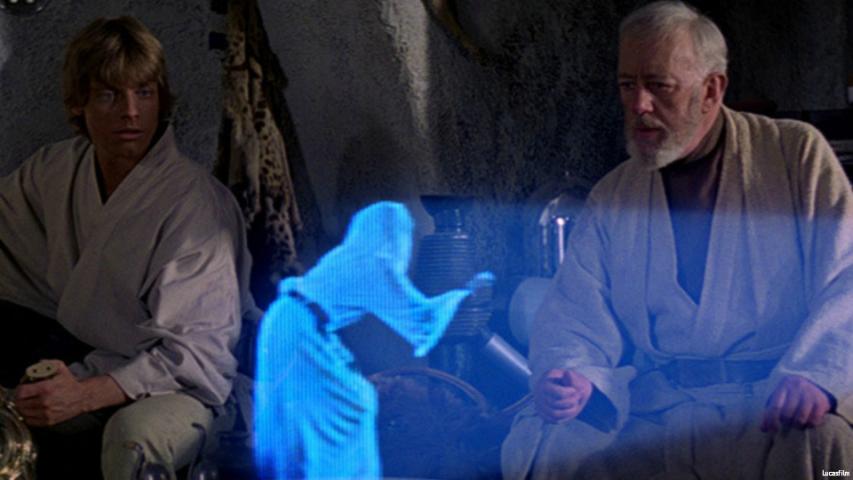
This is the third and final article in a series on 3D imaging, this time looking at the promises, real and otherwise, of the holographic display.
No discussion of 3-D imaging should ignore the hologram. Examples real and fictional are everywhere. In the very first Star Wars movie, Princess Leia called for Obi-Wan Kenobi via a holographic message carried by the trusty R2-D2. Much later in that same franchise, Finn accidentally restarts a holographic chess game, long abandoned by Chewbacca and C-3PO aboard the Millennium Falcon. How are we supposed to know we’re seeing the future if someone isn’t looking at a hologram?
Some would have us believe that real holograms are just around the corner. If you believe all the press, we should have holographic displays on our smartphones and tablets any day now.
Some would have us believe that real holograms are just around the corner.
Search for “DIY hologram” on YouTube, and you’ll even find videos telling you how to easily make your own, using only some clear plastic! The only problem with all of this is those aren’t really holograms.
A true hologram is, admittedly, a pretty cool thing. It’s a means of capturing enough information about a light field so as to be able to re-create that light field later — and with it, the appearance of solid objects in three-dimensional space. You can walk past a true holographic image, look above it and below it, and see everything in it just as in real life. It doesn’t require either glasses or keeping you head locked in a certain position. The things you’re seeing are just there, with an almost undefinable quality about them that makes them look impossibly real. How is this done? Conceptually, it’s pretty simple.
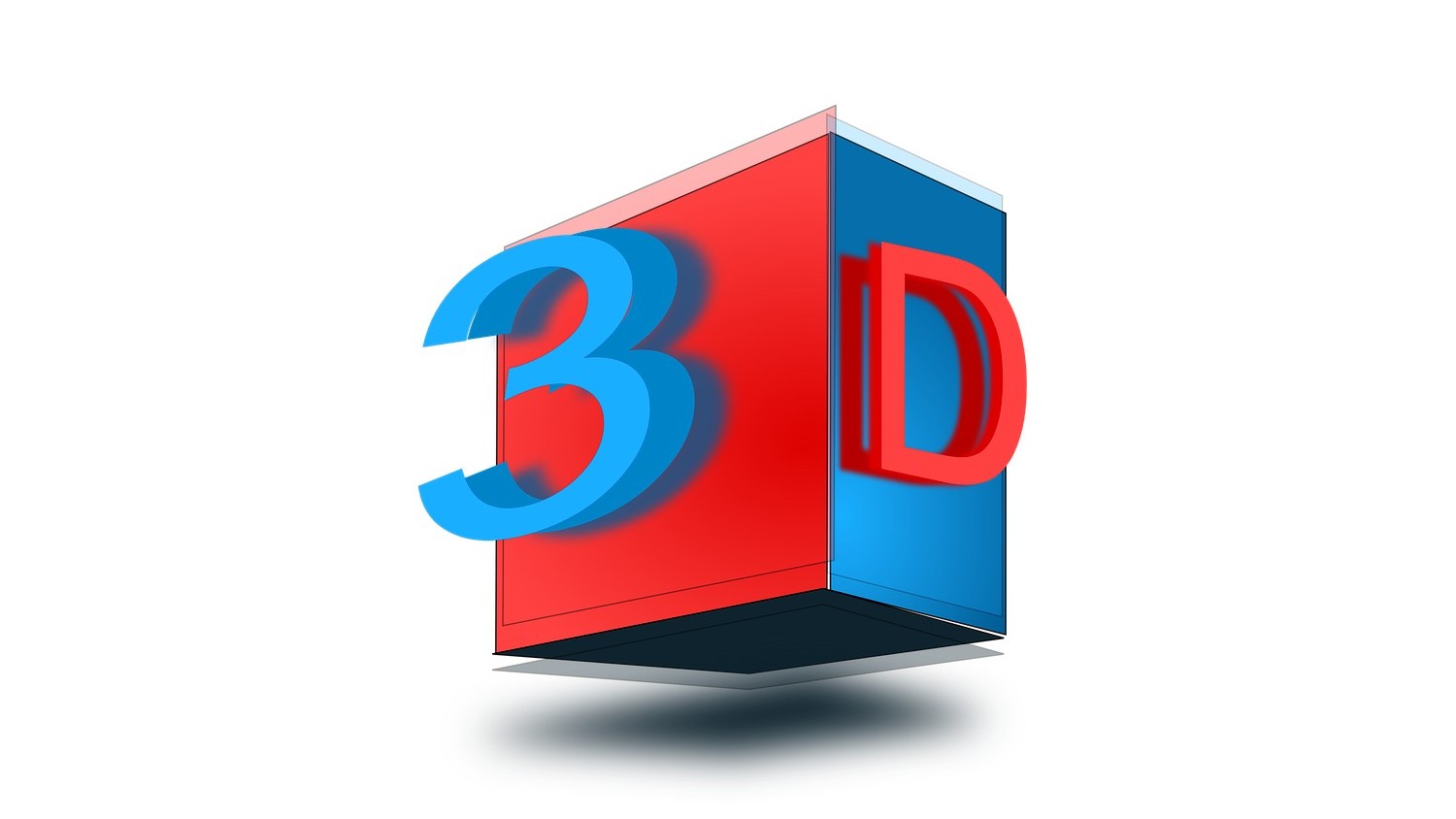
Imagine you’re looking through a window at a scene outdoors, with different items in view both near and far. Moving your head around changes the view; objects move relative to one another in obviously-real three-dimensional space. Yet everything we see is visible because of the light passing through the two-dimensional plane outlined by the window. If we could somehow capture all of the light crossing that plane, and re-create it elsewhere, we’d also recreate the view out that window perfectly. And that’s exactly what a hologram does.
A hologram is very often created on film, but it’s not a photograph. It’s not even a picture, really. If you look at a film hologram under ordinary light, it looks like nothing much at all, just a murky haze on a piece of plastic. What the film has actually captured is an “interference pattern,” created by exposure to both a reference coherent light source (such as a laser) and the reflection of that same light from the objects being photographed (or rather, holographed). If you later view the film under the same light as was used for the original reference, the light field from the objects is recreated; we’ve captured and recreated the field of light “passing through the window” as defined by the area of the film.
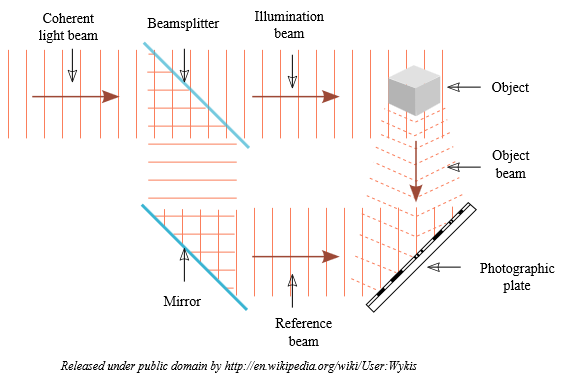
You can do this same trick in color. You can even make movies with this technique. As with other sorts of color imaging, simply repeating the process three times, one with each of the primary color of light (red, green, and blue) creates a full color image. Repeating the process over and over gives you multiple images that can be strung together to create the illusion of motion. So why aren’t we using this method for everything?
The basic problem can be expressed in one word: information. Capturing an information pattern to the level of detail needed for high-resolution images means that we have to be creating an image with spatial resolution down to the order of the wavelength of the light being used.
You think 500 PPI is high resolution? Try a hundred times that.
As visible light’s wavelength ranges from about 400 to 770 nanometers, this means that we need a medium that can record up to several thousand lines per millimeter. You think 500 PPI is high resolution? Try a hundred times that. That means a truly holographic display the size of the typical smartphone (let’s say 5.5-inch diagonal, and a 2:1 aspect ratio) might have something close to 250K x 125K pixels. That’s a 31 gigapixel screen! Feeding it at a 180 Hz frame rate (we still haven’t accounted for the need to cover all three primary colors) means you have an information rate of over five and a half terabits per second, at just one bit per pixel.
That, my friends, is why we don’t have holograms for displays.
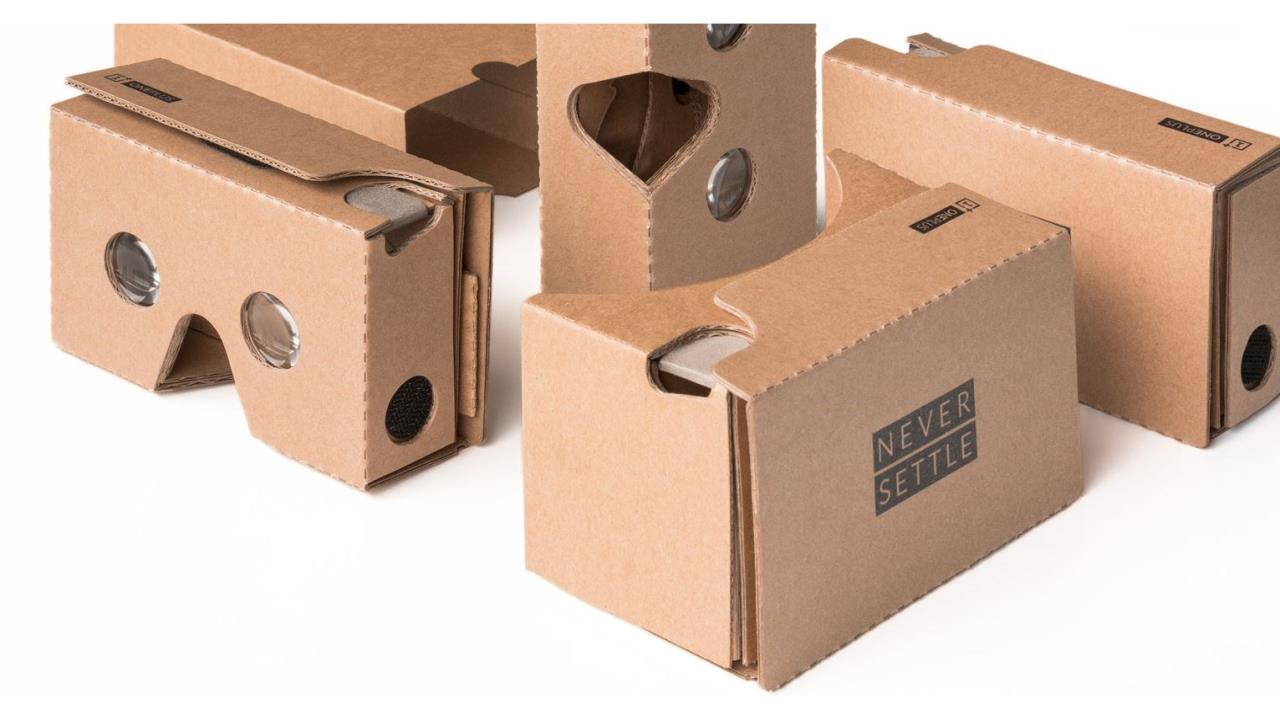
We can’t even come close to economically making displays which can provide the requisite resolution, let alone processing horsepower, to create holographic images on the fly. Certainly not in something with the size and power limits of a smartphone.
That hasn’t stopped a lot of people from claiming to make “holographic” displays. It’s a term that’s wound up being applied to just about any “3D” (or “3D-like”) imaging, especially any that don’t require the user to wear glasses. So these days, the vast majority of what you see described as holograms really aren’t — they’re either a form of autostereoscopic display, sometimes with the ability to provide multiple viewpoints, or they’re creating a clever illusion of depth from what is really just a two-dimensional image.
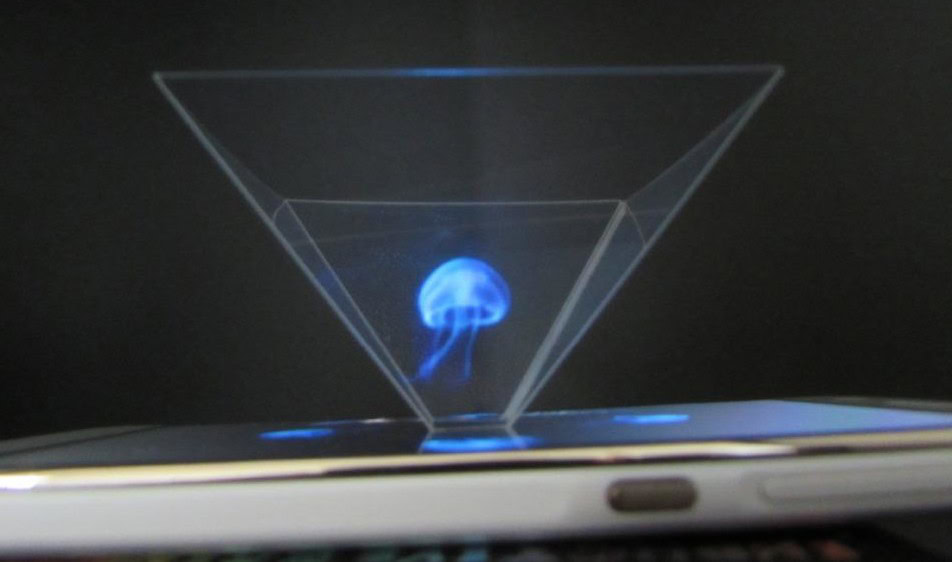
The little plastic pyramids you see for sale or as a DIY project are the latter. They’re actually a variant on a stage illusion called Pepper’s Ghost, which dates back to 1861. In this case, the images aren’t even really three-dimensional; they’re just four 2-D images displayed on the phone’s screen. The illusion of depth comes from the image appearing to float inside the pyramid, just as images in a mirror seem to be somehow behind the mirror’s surface.
On the other hand, autostereo displays create the appearance of depth in the same way as good old 3D glasses: by delivering slightly different views to each eye. In this case it’s done without any eyewear to filter the images, instead using some form of optical “directing,” which sends the light of the left-eye and right-eye images out on carefully-controlled paths. As long as your head’s in the right place, each eye will intercept only the intended image. This can be done using an array of tiny lenses, or sometimes an additional liquid crystal layer added to the display, which acts as a switchable set of barriers, letting the display be used in both normal 2-D and autostereo “3-D” modes.
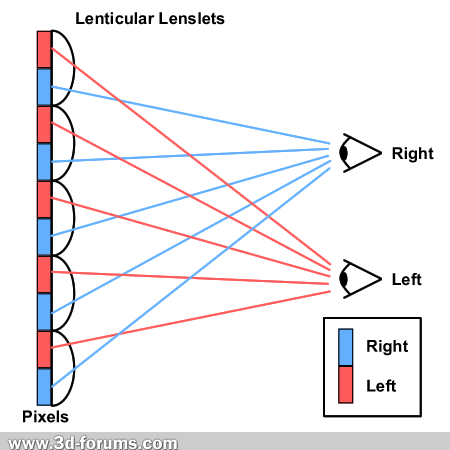
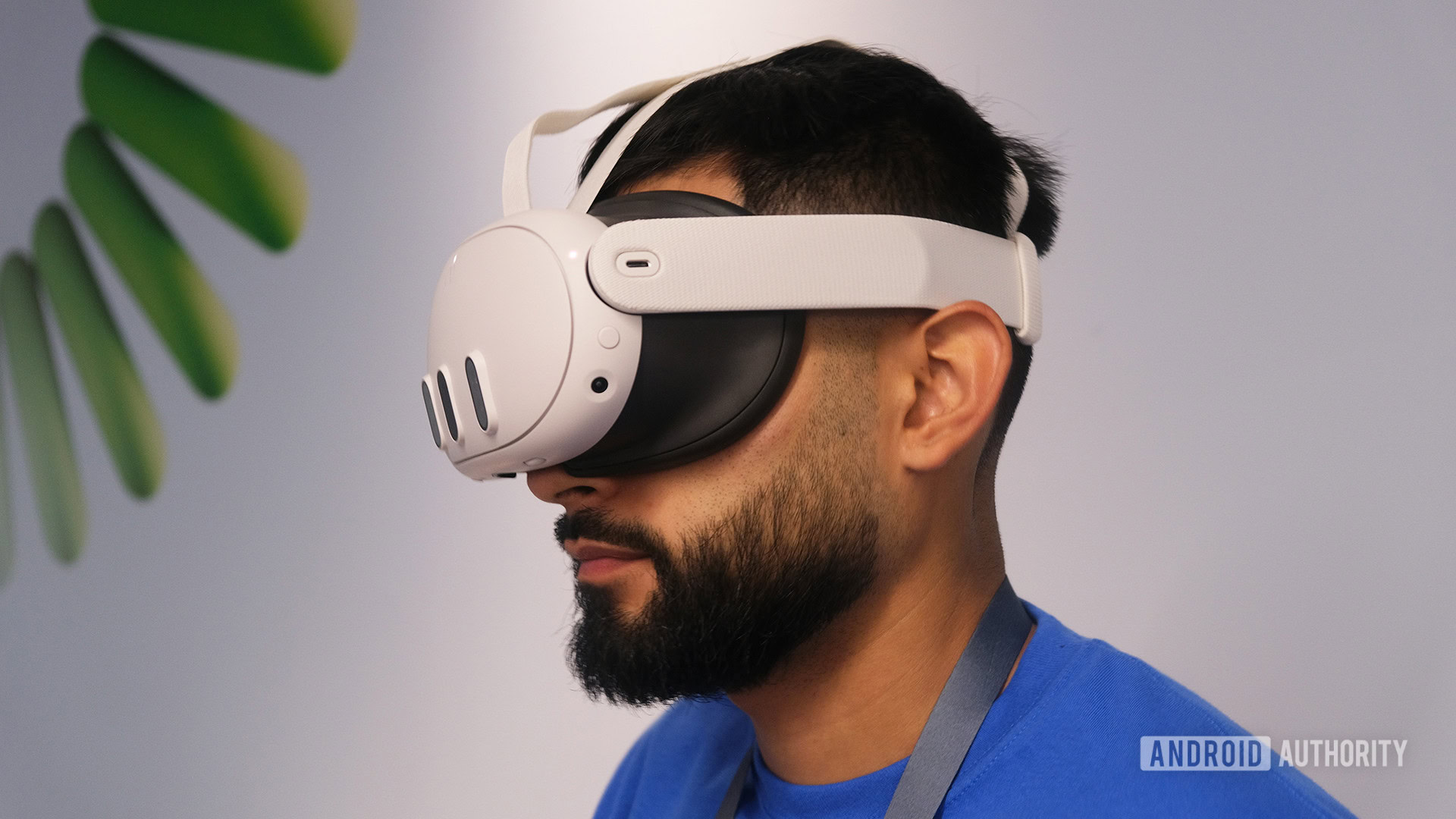
However it’s done, autostereo displays require displaying two images at the same time, which means each gets only half the pixels on the screen. Inevitably resolution is lost compared to the 2-D capabilities of the same display. Providing multiple “sweet spots” or viewpoints makes this even worse, since every additional viewpoint means another pair of images. Two viewpoints means four images, each with only a quarter of the pixels on the panel, and so forth.
But none of these are remotely close to being real holograms, and calling them that is just over-enthusiastic marketing. Will we ever get truly holographic displays? It’s possible, even with all of the challenges we’ve seen.
Eye tracking can permit a system to create a true hologram visible only from where the viewer is at the moment, greatly reducing the amount of information processed and displayed. Even this method is well beyond what could reasonably be achieved on a mobile device, and or even in a practical desktop form. The bottom line is real holography remains the subject of a lot of research, with few manufacturable designs.
Perhaps someday a future Princess Leia will appear to Obi-Wan in a truly 3D form. For now, take any claims of “holographic” displays, especially in mobile devices, with a decent-sized (and three-dimensional) grain of salt.